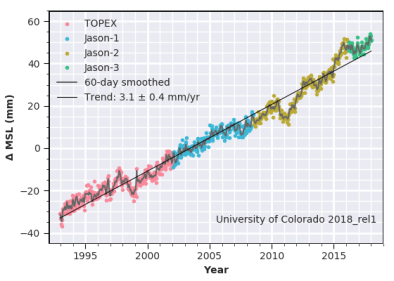King Tides and Southeast Flooding 2015
In late October 2015, the highest predicted high tide of the year—known as the king tide—combined with heavy rain and sea level rise to push tide gauges in many Southeastern US coastal cities to near-record levels. Thanks to human-caused sea-level rise, residents of some coastal cities are seeing their streets flood more regularly during such storms and high tide events.







King tide competes with hurricanes for record water levels
On October 27, the high tide in Charleston peaked at 8.69 feet, over a foot and a half higher than the predicted level. In Savannah, the water level reached 10.43 feet, the third highest on record after records set during hurricane events. King tides are now competing with hurricanes for all-time water level records.
Climate change causes high-er tides and great-er damages
Climate change does not cause high tides; it causes sea-level rise that results in higher tides. Sea-level rise boosted high tides are becoming an increasing problem even on storm free days—a phenomenon known as “nuisance flooding.” But the greatest risk to human life and infrastructure occurs when natural and human-caused forces combine, as they do during major storms or hurricanes, to produce and boost coastal storm surges. It is when storm surge—the rise of water and waves generated by a storm—rides atop higher seas that storms often do the most damage, because a small increase in surge can top coastal defenses.
Sea-level rise does not occur at the same rate in every location because different regions have different geographics, water salinities, and circulation patterns that can affect observed rates of sea level rise. However, the Atlantic coast of North America is a hotspot of accelerated sea-level rise, with research showing the rate of sea level rise for over 600 miles from North Carolina to Maine to be 3 to 4 times higher than the global average. In the United States, an estimated 5 million people currently live within 4 feet of current high tide lines.
Warmer air, like a bigger bucket, can hold and dump more water during storms
Global warming means that precipitation events, in addition to riding atop higher seas, also dump more water because a warmer atmosphere holds more moisture—7 percent more per °C according to a well-established physical law, known as the Clausius-Clapeyron relation. Since the 1970s, one study finds the increase in atmospheric water vapor has likely had a 5 to 10 percent effect on storm precipitation, an effect that is greatly amplified in extreme events.
Warmer sea surface temperatures intensify storms and storm surges
The day before the king tide and storm-related flooding event began, sea surface temperatures off the US Southeast coast were approximately 1.8°F (1°C) above observed monthly averages from 1984-1993. Warmer water in the oceans pumps more energy into tropical storms, making them stronger and potentially more destructive. Stronger storms combined with higher sea levels exacerbate storm surges, flooding, and erosion.






